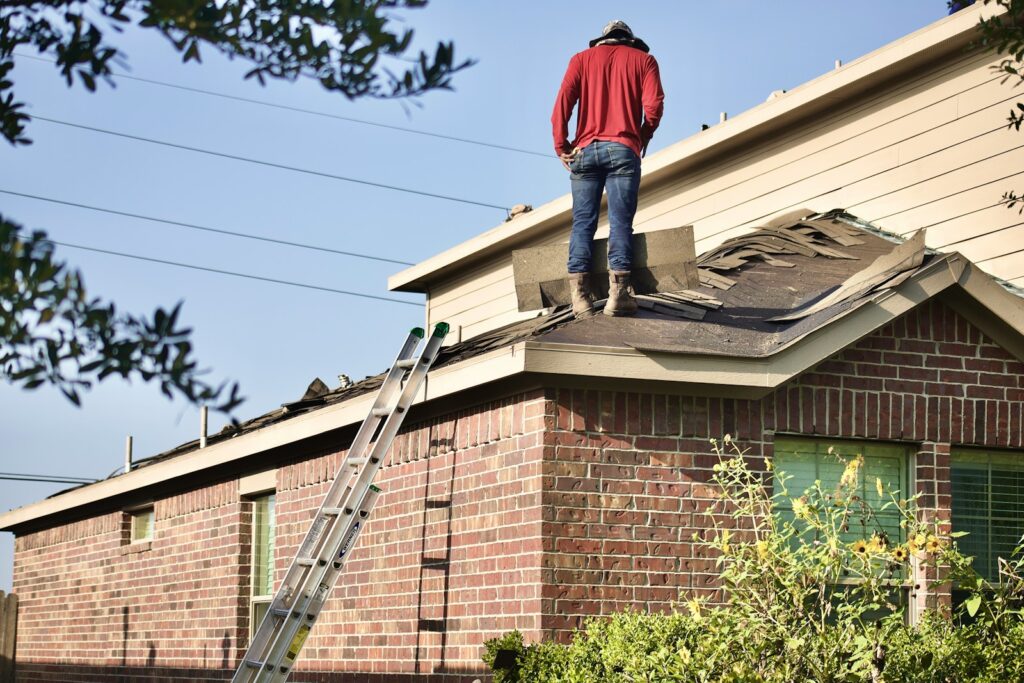
Roofs are an essential part of any building structure, providing protection from the elements while also contributing to the aesthetic appeal of a home or commercial property. With a wide array of roofing materials available today, each with its own advantages, the choice of roofing material depends on factors such as climate, budget, building design, and personal preferences. In this essay, we will explore some of the most common types of roofing materials used in residential and commercial construction, including their benefits and drawbacks. For expert opinion on this call roof contractors near Delta Ohio.
1. Asphalt Shingles
Asphalt shingles are the most widely used roofing material in North America due to their affordability, ease of installation, and versatility. Made from a fiberglass base coated with asphalt and granules, asphalt shingles are available in a variety of colors and styles. They can withstand moderate weather conditions, making them an ideal choice for many homeowners.
Advantages:
- Affordable and cost-effective
- Easy to install and repair
- Available in a wide range of colors and designs
- Suitable for a variety of climates
Disadvantages:
- Less durable than some other materials (typically last 15-30 years)
- Can be prone to damage from extreme weather conditions, such as high winds or hail
- Not as environmentally friendly as some alternatives
2. Wood Shingles and Shakes
Wood shingles and shakes are traditional roofing materials made from cedar, pine, or redwood. They provide a natural, rustic look that complements many architectural styles, particularly in areas with a lot of natural surroundings. Wood shingles are machine-cut, while shakes are hand-split, giving them a more textured appearance.
Advantages:
- Attractive and natural appearance
- Offers excellent insulation properties
- Environmentally friendly (when sourced sustainably)
Disadvantages:
- Requires more maintenance than asphalt
- Prone to mold, rot, and insect damage if not properly treated
- Can be more expensive than asphalt shingles
- Not as fire-resistant unless treated
3. Metal Roofing
Metal roofs, made from materials such as steel, aluminum, or copper, have gained popularity in recent years due to their durability, energy efficiency, and sleek, modern appearance. Metal roofs are typically made from panels or shingles, and they are known for their ability to withstand harsh weather conditions, including high winds and heavy snow.
Advantages:
- Extremely durable (can last 50 years or more)
- Energy-efficient due to reflective properties that reduce cooling costs
- Fire-resistant and highly resistant to extreme weather
- Lightweight and easy to install
Disadvantages:
- High initial cost compared to asphalt shingles
- Can be noisy during rain or hail unless properly insulated
- Potential for denting from large hail or fallen debris
4. Clay and Concrete Tiles
Clay and concrete tiles are often associated with Mediterranean, Spanish, and Southwestern architectural styles, providing a distinctive and elegant look. These tiles are highly durable and are often used in regions that experience hot, dry climates, such as the southwestern United States.
Advantages:
- Extremely durable and long-lasting (can last up to 100 years)
- Resistant to fire, rot, and insect damage
- Provides excellent thermal insulation
- Low maintenance requirements
Disadvantages:
- Heavy, requiring additional structural support
- Expensive, both in terms of materials and installation
- Prone to cracking under impact, such as from falling branches or hail
- Limited in terms of color and style compared to other materials
5. Slate Roofing
Slate is a natural stone that has been used for roofing for centuries, known for its beauty, longevity, and resilience. It is available in various shades of gray, green, red, and purple, offering a distinctive and elegant appearance. Slate is often used on high-end homes and historic buildings.
Advantages:
- Exceptionally durable (can last over 100 years)
- Fire-resistant and highly resistant to weathering
- Elegant and timeless appearance
- Eco-friendly due to its natural origin and long lifespan
Disadvantages:
- Extremely heavy, requiring strong structural support
- High cost of materials and installation
- Requires skilled professionals for installation and repairs
- Can be prone to breaking if walked on
6. Synthetic Roofing Materials
Synthetic roofing materials are relatively new to the market but are gaining traction due to their versatility, affordability, and eco-friendliness. These materials are made from recycled plastics, rubber, or other synthetic compounds, designed to mimic the look of more traditional roofing materials such as wood, slate, or clay.
Advantages:
- Lightweight and easy to install
- Cost-effective and low-maintenance
- Eco-friendly, often made from recycled materials
- Highly durable and resistant to weathering, mold, and pests
Disadvantages:
- Newer technology, so long-term performance is less established
- Can have a synthetic appearance, which may not appeal to all homeowners
- May not add as much value to the property as more traditional materials
7. Green Roofing (Living Roofs)
Green roofing, or living roofs, is an environmentally friendly roofing system that involves the installation of plants and vegetation on top of a waterproof membrane. This type of roofing is gaining popularity in urban areas, especially on commercial buildings, as it helps manage stormwater, reduce energy consumption, and promote biodiversity.
Advantages:
- Improves energy efficiency by providing natural insulation
- Reduces urban heat island effect and promotes sustainability
- Absorbs rainwater, reducing runoff and the risk of flooding
- Provides a habitat for wildlife and plants
Disadvantages:
- High initial cost and complex installation
- Requires regular maintenance and upkeep
- Can be heavy and may require structural reinforcement
The choice of roofing material plays a significant role in the overall performance, appearance, and longevity of a building. Homeowners and builders must consider various factors, including climate, budget, aesthetics, and environmental impact, when selecting a roofing material. Whether opting for the affordability of asphalt shingles, the elegance of slate, or the eco-friendliness of green roofs, each material offers unique advantages and challenges. Ultimately, selecting the right roofing material is crucial for ensuring the long-term durability and comfort of a building.





